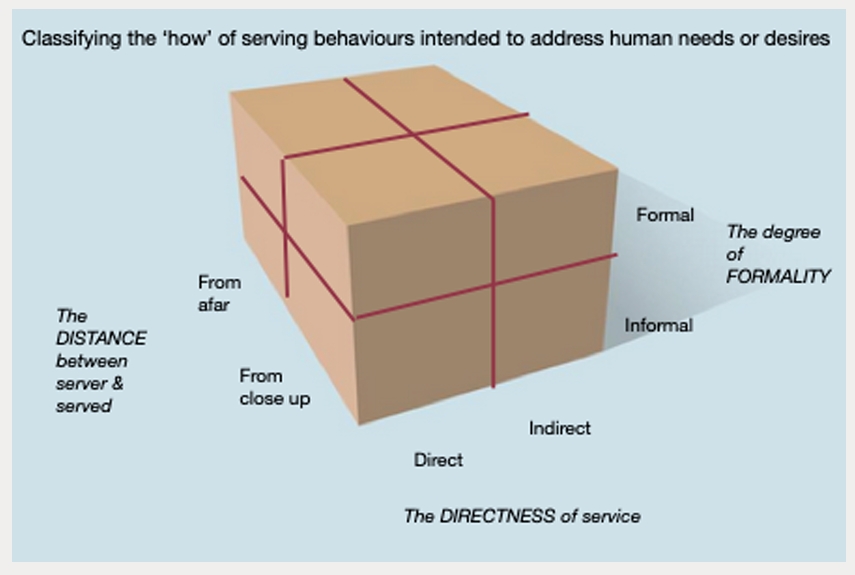Slicing and Dicing Service Processes part 2
This SRV does some more ‘scrutinising analysis’ based on the last SRV Matters topic (ed.8) Check out the diagram and reread the last edition. Blog title: Which might you like for yourself? Slicing and Dicing Service Processes
There is much about the shape of a service
that we take for granted. The current service
landscape is filled with big funded services
that look and act more like businesses than
community-based efforts to make a
difference in the lives of vulnerable people.
There are many individuals and family
members who have expanded their
responsibilities to include managing staff. Dr
Wolfensberger provided us with a small
schema to help us analyse what we are
seeing: three dimensions for forms of
services.
Just a reminder that this edition is not
advocating ‘good vs bad’ service forms but
rather reminding us to measure the forms of
service against the SRV question: is what is
being provided and the ways they’re being
provided relevant and effective in helping
each individual have access to the valued and
good things in life? Therefore, to what extent do the
administrative and organisational rules and actions help or hinder efforts for better lives?
Firstly, here are some examples to explain the interplay between the three dimensions of the
service forms:
distant-close up, formal-informal, direct-indirect. This edition then goes on to to illustrate some issues.
- A School of the Air education program is an
example of a distant (from far away), formal
(bounded by rules) and direct (direct to/with
the person) form of service. - Unpaid support from an unpaid server (like a
family member, neighbour, sports team
member or work colleague) is a closeup,
informal, direct form of service. - A day service for a group of older people, an
employment service supporting individuals into
work, and ‘closeup’ advocacy’ all share that
they are closeup (close distance between
server and served), formal, and direct forms of
service. - Training, supports coordination, phone-based
assessments, program management, fund
raising, and efforts via advocacy to ensure that
a group gets a service are all examples of
indirect, distant forms of service.

Author: Jane Sherwin www.asrva.org.au



